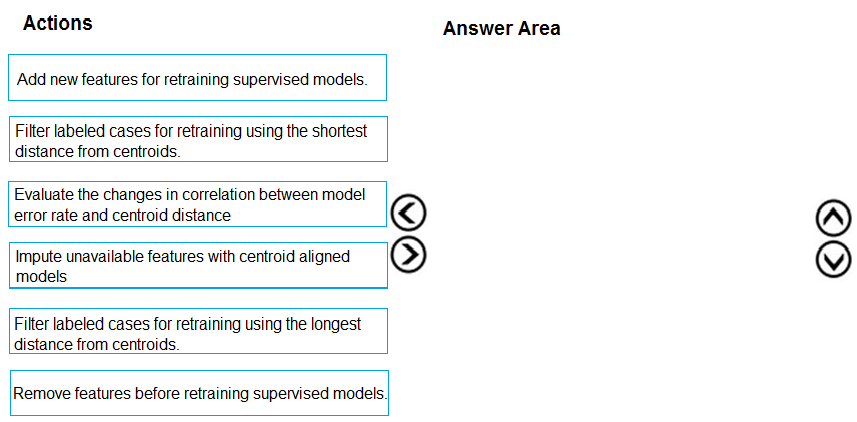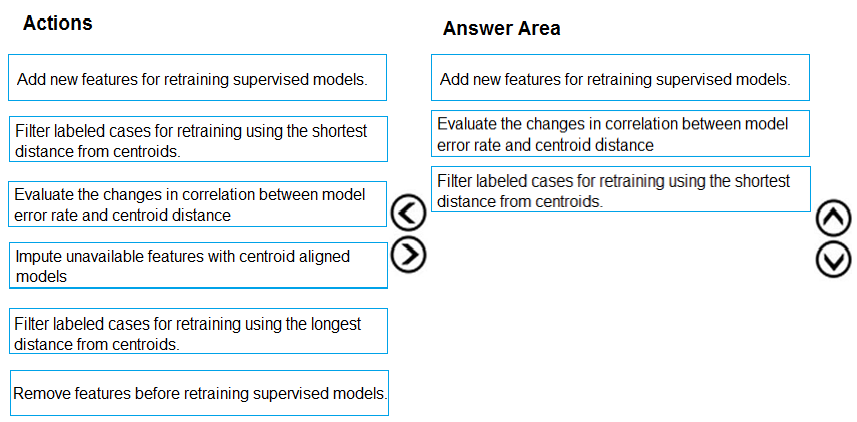

DRAG DROP -
You need to define an evaluation strategy for the crowd sentiment models.
Which three actions should you perform in sequence? To answer, move the appropriate actions from the list of actions to the answer area and arrange them in the correct order.
Select and Place:

mrkalman
Highly Voted 4 years, 4 months agokalel249
Highly Voted 4 years, 3 months agohaby
Most Recent 1 year, 1 month agohaby
1 year, 1 month agophdykd
1 year, 5 months agophdykd
1 year, 6 months agophdykd
1 year, 11 months agosnegnik
1 year, 8 months agoPremPatrick
2 years, 2 months agomichaelmorar
1 year, 11 months agosnegnik
1 year, 8 months agoning
2 years, 7 months agojed_elhak
3 years, 4 months agojed_elhak
3 years, 4 months agoprashantjoge
3 years, 8 months agoHoustonHo
4 years, 3 months ago